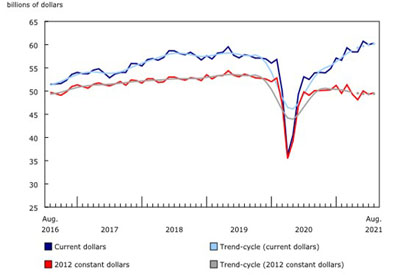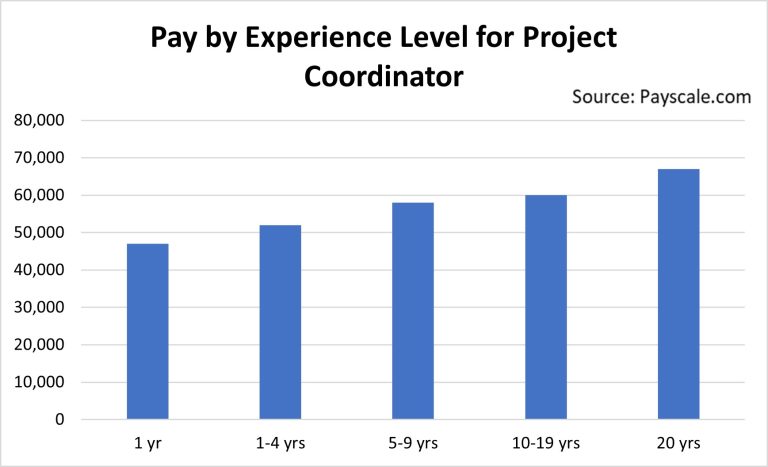Labour Force Survey, February 2025

March 12, 2025
Labour employment was virtually unchanged in February (+1,100; +0.0%) and the employment rate held steady at 61.1%. The unemployment rate was unchanged at 6.6%.
In February, employment rose among core-aged (25 to 54 years old) women (+27,000; +0.4%), while it fell among women aged 55 years and older (-15,000; -0.8%).
Employment increased in wholesale and retail trade (+51,000; +1.7%) as well as finance, insurance, real estate, rental and leasing (+16,000; +1.1%). There were declines in professional, scientific and technical services (-33,000; -1.6%) and transportation and warehousing (-23,000; -2.1%).
Employment fell in Nova Scotia (-4,300; -0.8%) and was little changed in all other provinces in February.
Total hours worked fell 1.3% in the month, but were up 0.5% compared with 12 months earlier.
Average hourly wages among employees were up 3.8% (+$1.32 to $36.14) on a year-over-year basis in February, following growth of 3.5% in January (not seasonally adjusted).
Employment holds steady in February
Employment held steady in February (+1,100; +0.0%), following three consecutive monthly increases totalling 211,000 (+1.0%) in November, December and January. On a year-over-year basis, employment was up by 387,000 (+1.9%) in February.
The employment rate—the proportion of the population aged 15 and older who are employed—was unchanged at 61.1% in February. This follows three consecutive months of increases. The employment rate had previously fallen 1.7 percentage points from April 2023 to October 2024, as employment growth was outpaced by population growth.
Chart 1
Employment rate unchanged in February

Infographic 1
Employment rate by age group, February 2025

Growth in the population aged 15 and older in the Labour Force Survey (LFS) has slowed in recent months. Growth in February 2025 (+47,000; +0.1%) was less than half that recorded 12 months earlier (+97,000; +0.3%), and the slowest since April 2022. According to the most recent official population estimates, the third quarter of 2024 saw the slowest quarterly population growth since the first quarter of 2022. More information on how population totals in the LFS are calculated can be found in the article “Interpreting population totals from the Labour Force Survey.”
The number of employees in the private sector was little changed in February, following increases in December (+39,000; +0.3%) and January (+57,000; +0.4%). Public sector employment and self-employment were also both little changed in February.
Employment increases among core-aged women
Employment increased by 27,000 (+0.4%) among women in the core-age group (25 to 54 years old) in February, building on an increase in January (+36,000; +0.5%). The employment rate of core-aged women held steady at 80.5% in February and was up 0.4 percentage points from a recent low in December 2024.
For core-aged men, employment was little changed in February, following three consecutive months of increases totalling 90,000 (+1.3%) in November, December and January. The employment rate of core-aged men (86.7%) was also little changed in February, and up 0.4 percentage points from its recent low in October 2024.
Employment among people aged 55 years and older fell by 21,000 (-0.5%) in February. The decline was mostly among women in this age group (-15,000; -0.8%). On a year-over-year basis, employment was little changed for both women and men aged 55 and older.
Youth (15 to 24 years) employment was little changed in February, as was the youth employment rate (at 54.3%).
Snowstorms lead to lost work hours in February
Total actual hours worked fell 1.3% in February—the largest monthly decline since April 2022. On a year-over-year basis, total actual hours worked were up 0.5% in February 2025.
Notable winter storms buried parts of Central and Eastern Canada in snow throughout the LFS reference week of February 9 to February 15. In total, 429,000 employees lost work hours due to the weather for part of the week (not seasonally adjusted). This was more than four times higher than the average number of employees who lost work hours due to weather in February over the previous five years (96,000).
Unemployment rate unchanged at 6.6%
The unemployment rate was unchanged at 6.6% in February, following decreases in December (-0.2 percentage points) and January (-0.1 percentage points). The unemployment rate had previously trended up, rising from 5.0% in March 2023 to reach a recent high of 6.9% in November 2024.
Chart 2
Unemployment rate unchanged in February

The unemployment rate declined 0.2 percentage points to 5.4% in February for core-aged women. For core-aged men, the rate rose 0.3 percentage points to 5.9%, driven by an increase in the number of job searchers.
Among youth, the unemployment rate fell 0.7 percentage points to 12.9% in February, following a similar-sized decline in January (-0.6 percentage points). Over this two-month period, the number of young unemployed job searchers fell by 41,000 (-9.3%), while youth employment rose by 22,000 (+0.8%). The youth unemployment rate had previously touched a 12-year high (excluding the years 2020 and 2021, during the COVID-19 pandemic) of 14.2% in August and December 2024, following a strong upward trend throughout most of 2023 and 2024.
Labour force participation rate falls in February, led by a decline among youth
The labour force participation rate—that is, the proportion of the population aged 15 and older who were employed or looking for work—decreased by 0.2 percentage points to 65.3% in February, the first decrease since September 2024.
Infographic 2
Unemployment rate by age group, February 2025

The labour force participation rate was down in February among youth (-0.8 percentage points to 62.3%) and people aged 55 and older (-0.2 percentage points to 36.0%). At the same time, it was up among people in the core-age (+0.1 percentage points to 88.7%).
The youth participation rate in February (62.3%) was down by 1.2 percentage points compared with 12 months earlier. This decline was similar for students (-1.5 percentage points to 43.3%) and non-students (-1.6 percentage points to 86.0%) (not seasonally adjusted).
Wholesale and retail trade records largest employment gain, while professional, scientific and technical services posts a decline
In February, employment increased in wholesale and retail trade (+51,000; +1.7%). Employment in this industry has trended up in recent months, rising 107,000 (+3.7%) from a recent low point in July 2024 and offsetting declines in the first half of 2024. Compared with 12 months earlier, the number of people working in the industry was little changed.
More people worked in finance, insurance, real estate, rental and leasing (+16,000; +1.1%) in February, the second increase in three months. On a year-over-year basis, employment in the industry was up by 60,000 (+4.3%).
Chart 3
Employment gains led by wholesale and retail trade offset by declines in other industries

In contrast, employment fell in February in professional, scientific and technical services (-33,000; -1.6%). Employment growth in this industry has been subdued in recent months, following a strong upward trend from July 2023 to November 2024.
Employment also fell in transportation and warehousing (-23,000; -2.1%) in February, following gains of 17,000 in December and 13,000 in January. On a year-over-year basis, employment in the industry was down by 29,000 (-2.6%).
Employment declines in Nova Scotia, holds steady in all other provinces
Employment declined in Nova Scotia in February (-4,300; -0.8%), all in part-time work. The unemployment rate in the province increased 0.7 percentage points to 6.6% in the month, but was little changed on a year-over-year basis.
In February, all provinces except Nova Scotia recorded little employment change. Across provinces, the unemployment rate in February was lowest in Quebec (5.3%), followed closely by Saskatchewan (5.4%), while it was highest in Newfoundland and Labrador (10.5%).
Map 1
Unemployment rate by province and territory, February 2025

In Quebec, employment held steady for the third consecutive month in February. On a year-over-year basis, employment in the province was up by 81,000 (+1.8%), with gains concentrated in the second half of 2024. The unemployment rate in the province held steady in February (at 5.3%) and was up 0.5 percentage points on a year-over-year basis, as more people searched for work.
In Ontario, employment was little changed (+17,000; +0.2%), following gains of 32,000 in December and 39,000 in January. The number of people searching for work in Ontario fell in February (-21,000; -3.1%), which contributed to lowering the unemployment rate in the province by 0.3 percentage points to 7.3%.
In the spotlight: Core-aged women more likely to work part-time and multiple jobs
March 8th is International Women’s Day, a global day to recognize the achievements of women and girls and reflect on the progress made towards gender equality, while acknowledging the challenges and barriers that still exist.
In February 2025, the employment rate of core-aged (25 to 54 years) women was 80.5%, up 0.4 percentage points from a recent low in December 2024. The rate had previously reached a record high of 82.0% in January 2023, before trending down through most of 2023 and 2024. The employment rate of core-aged women in February remained above its pre-pandemic average from 2017 and 2019 (79.1%).
In February, women remained more likely than men to work part-time and hold multiple jobs. Among employed core-aged women, 15.7% worked part-time in their main job or business in February, compared with 6.1% of men in this age group. Caring for children was cited among almost one-quarter (24.3%) of women in this age group as the main reason for working part time (not seasonally adjusted).
At the same time, 7.6% of employed core-aged women worked multiple jobs in February, compared with 5.2% of employed core-aged men (not seasonally adjusted). The proportion of women working multiple jobs was notably high in accommodation and food services (10.9%), health care and social assistance (10.7%) and educational services (9.8%).
In February, core-aged women earned $36.04 per hour on average, which was $4.98 (or 12.1%) less on average than men ($41.02) (not seasonally adjusted). In other words, women in this age group earned $0.88 for every dollar earned by men. In general, the gender wage gap in Canada has narrowed from 18.8% since 1998 due to factors such as women’s increased educational attainment and the decline in the share of men in unionized employment.
In the Spotlight: More people willing to move to another province for a suitable job in February 2025
As labour market conditions change, the ability or willingness of Canadians to move to a different region or province for a job can increase opportunities for employment and reduce potential mismatches between the needs of employers and the available workforce.
In February 2025, among people aged 18 to 64 who were in the labour force—including people who were employed, looking for work or on temporary layoff—3 in 10 (30.3%) reported that they would be willing to move to another province if a suitable job was offered (not seasonally adjusted). This share was up 3.5 percentage points from February 2022, when the unemployment rate was 1.1 percentage points lower (at 5.5%, compared with 6.6% in February 2025).
Chart 4
The proportion of the labour force willing to move to another province is highest in the Prairies and Newfoundland and Labrador

Men (32.9%) were more likely than women (27.4%) to report being willing to move to another province for a job in February 2025.
Provincially, the proportion of people in the labour force who reported that they would be willing to move to a different province was lowest in Quebec (25.5%) and New Brunswick (25.7%), while it was highest in Manitoba (35.7%), Saskatchewan (35.5%) and Newfoundland and Labrador (34.2%).
Across occupations, workers in natural and applied sciences and related occupations were most likely (35.6%) to report that they would be willing to move to a different province if a suitable job was offered.
In comparison, workers in management occupations (26.0%), education, law and social, community and government services (27.0%) and health occupations (27.8%) were least likely to report that they would be willing to move.
Personal or family considerations were by far the most common reasons for not being willing to move to another province for a job. In February 2025, 73.2% of people who reported not being willing to move to another province said this was mainly because of personal or family reasons, such as staying close to family and friends (60.9%) or because their immediate family would not want to move (9.1%).
In February, 5.3% of those not willing to move indicated this was mainly because of financial reasons, while a further 2.2% indicated this was mainly because of high housing costs elsewhere.
The lack of recognition of credentials outside the province can be a significant barrier to interprovincial labour mobility. However, it was rarely cited (0.5%) as the main reason for not being willing to move to another province for a job.











